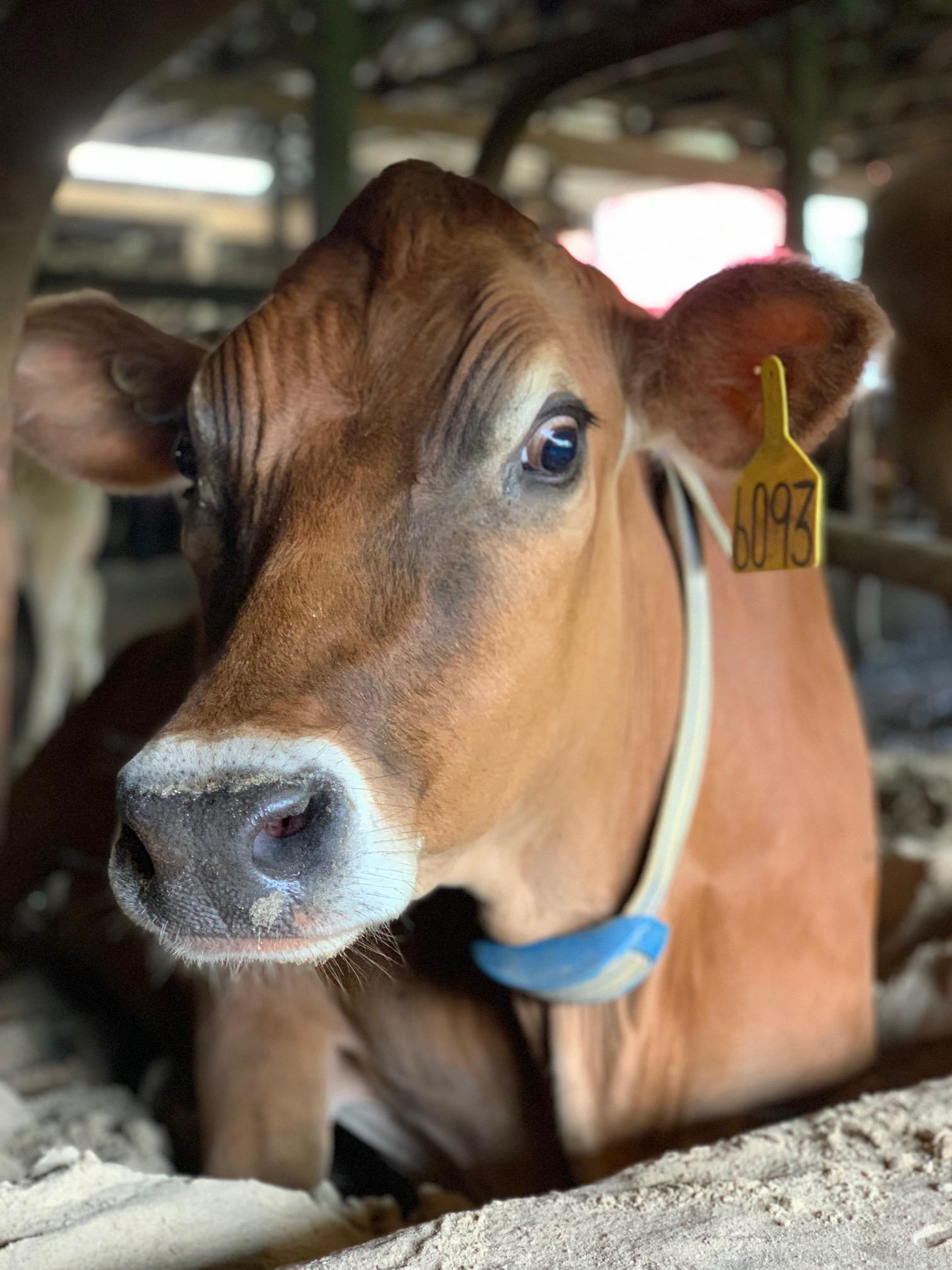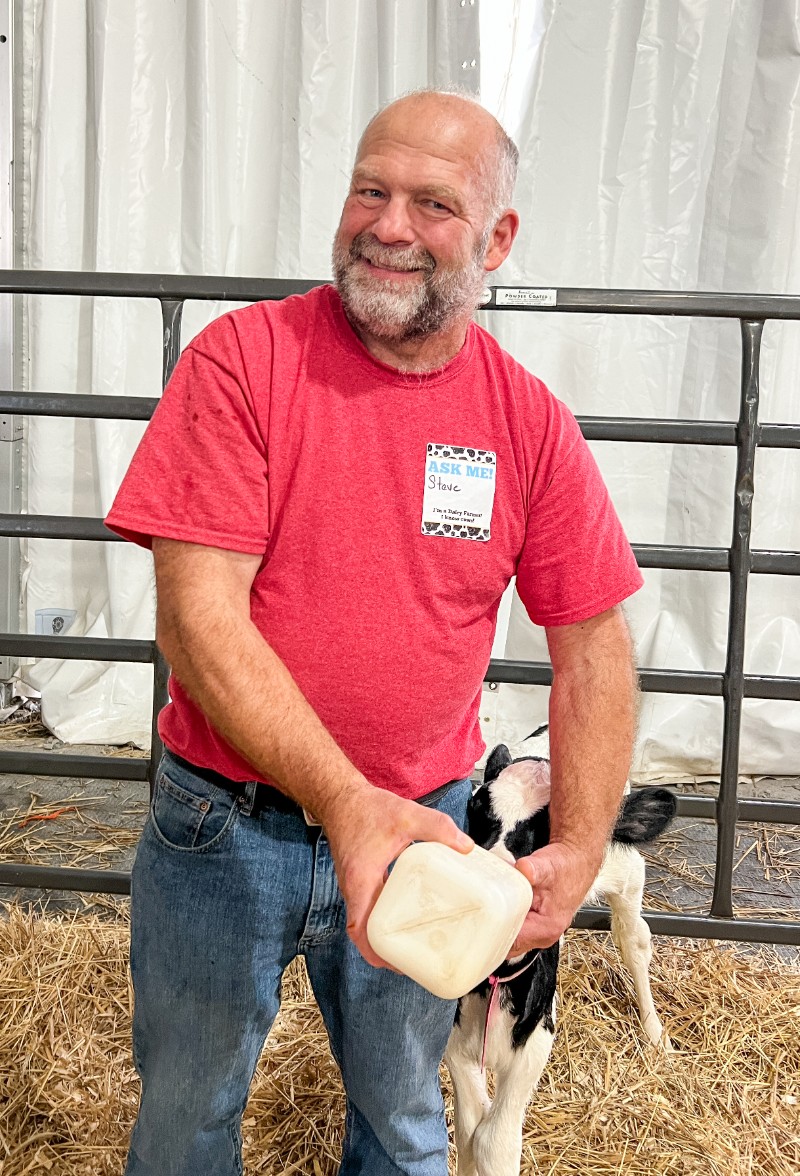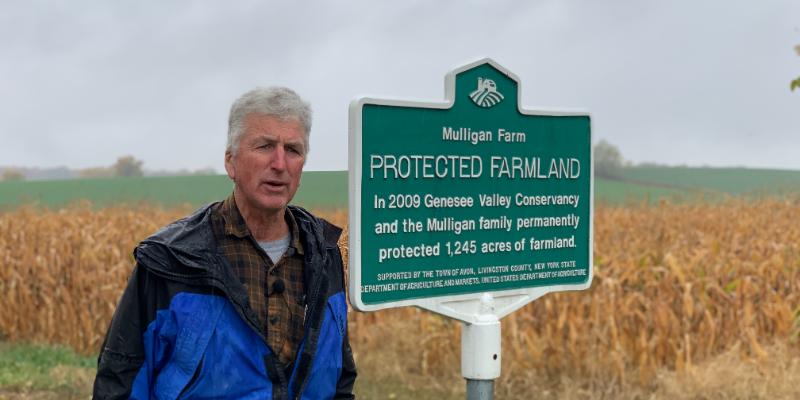-
December 13, 2022

- • Featured • Announcements
For farmers, being sustainable is not a new concept.
For farmers, being sustainable is not a new concept.
New York dairy farmers care for their animals, employees, and the environment, which is essential to food production. As we head into the spring and summer months, which are go-time for family farms across the state, it’s imperative to recognize farmers and their role as the original stewards of the land.
For farmers, being sustainable is not a new concept. In fact, we've been sustainable for generations. Our goal is to produce high-quality, nutritious milk, and we're doing this with less land, water, and fuel than in previous generations. Today, we’re producing more milk with 9 million cows than we did with 26 million cows in 1944. And over a 10-year period, dairy farmers have used 21% less land, 30% less water, and 20% less fuel, all while providing food for a growing population.
Working in consultation with academics, industry experts, and state and federal agencies, we implement science-based practices that ensure resources are utilized efficiently and in the best interest of our animals, communities, and environment. This is how the industry will achieve its goal of becoming carbon neutral by 2050.
Last year, agriculture accounted for barely 6% of total carbon emissions in New York State, according to the Department of Environmental Conservation. Yet unlike coal and other fossil fuels, animal agriculture is part of a natural biogenic carbon cycle. Cows recycle carbon that was once, and will again, be absorbed by plants. As documented by Cornell Professor of Dairy Cattle Biology Dr. Joseph McFadden, methane released by cows enters our atmosphere where it’s transformed into carbon dioxide, which is then used by plants to produce carbohydrates and cellulose. Cellulose is an insoluble fiber in the human diet, but cows have the means to digest it to support muscle and milk synthesis, which humans consume for nutrition and health.

We strive every day to provide the highest quality care to our cows and promote soil health, which is needed to grow crops for our animals. When soil is healthy, the air and water are too, because carbon remains in the soil to support our growing season.
Additionally, our animals consume forages that aren’t suitable for humans, including by-products that would otherwise end up in landfills. More than 80% of feed provided to cows is not suitable for human consumption. Farmers utilize almond hulls, citrus pulp, cotton seed, and even bakery refusals in cow diets. This is yet another key management practice that helps farmers continue their important work as stewards of the land.
Farmers collaborate with experts to help implement best management practices. Some farmers choose no-till farming which results in little soil disruption and less fuel usage. Farmers often plant buffer strips which are lines of grass planted within cropped fields to reduce water runoff and minimize soil erosion. On our farm, we test the soil annually to determine levels of nutrients that help make planting decisions, and we plant cover crops that capture nutrients that weren’t utilized during the main crop harvest. Similar to buffer strips, cover crops maintain high-quality soil health while providing erosion control and preventing runoff.
According to the Environmental Protection Agency, farmland management practices in 2018 resulted in the removal of 764 million metric tons of carbon dioxide from the atmosphere – the equivalent of removing 165 million cars off the road each year. So, without a doubt, farmers are part of the solution to reducing greenhouse gas emissions.
Dairy farms have cows, which also means they have manure – a valuable asset serving as a natural, organic fertilizer for fields. Some farms recycle manure by separating and drying it for cow bedding. Others recycle manure using anaerobic digestion which converts manure into clean, renewable electricity. On our farm, we follow strict regulations on how and where to store manure, the field application rate, and when and how to apply based on weather forecasts. By following science-based protocols, we ensure manure is utilized as effectively and efficiently as possible.
Cow health, employee safety, and land preservation are critical to the success of farms. As farmers head into the fields in the coming months and continue working daily to feed our communities while reducing our carbon footprint, we encourage New Yorkers to consider this: how can you help reduce emissions? We must all play our part in protecting our natural resources for the next generation. And we ask that you support family farms by enjoying a balanced diet filled with protein, plants, and dairy as recommended by the dietary guidelines for Americans. Buy local, support NYS agriculture, and contact farmers to visit and learn how we’re not the problem – we’re part of the solution.
 Steve Palladino is a family dairy farmer in Lansing, NY. He serves as the Chairman of the New York Animal Agriculture Coalition, a not-for-profit 5013c organization that helps others understand and appreciate animal agriculture.
Steve Palladino is a family dairy farmer in Lansing, NY. He serves as the Chairman of the New York Animal Agriculture Coalition, a not-for-profit 5013c organization that helps others understand and appreciate animal agriculture.

